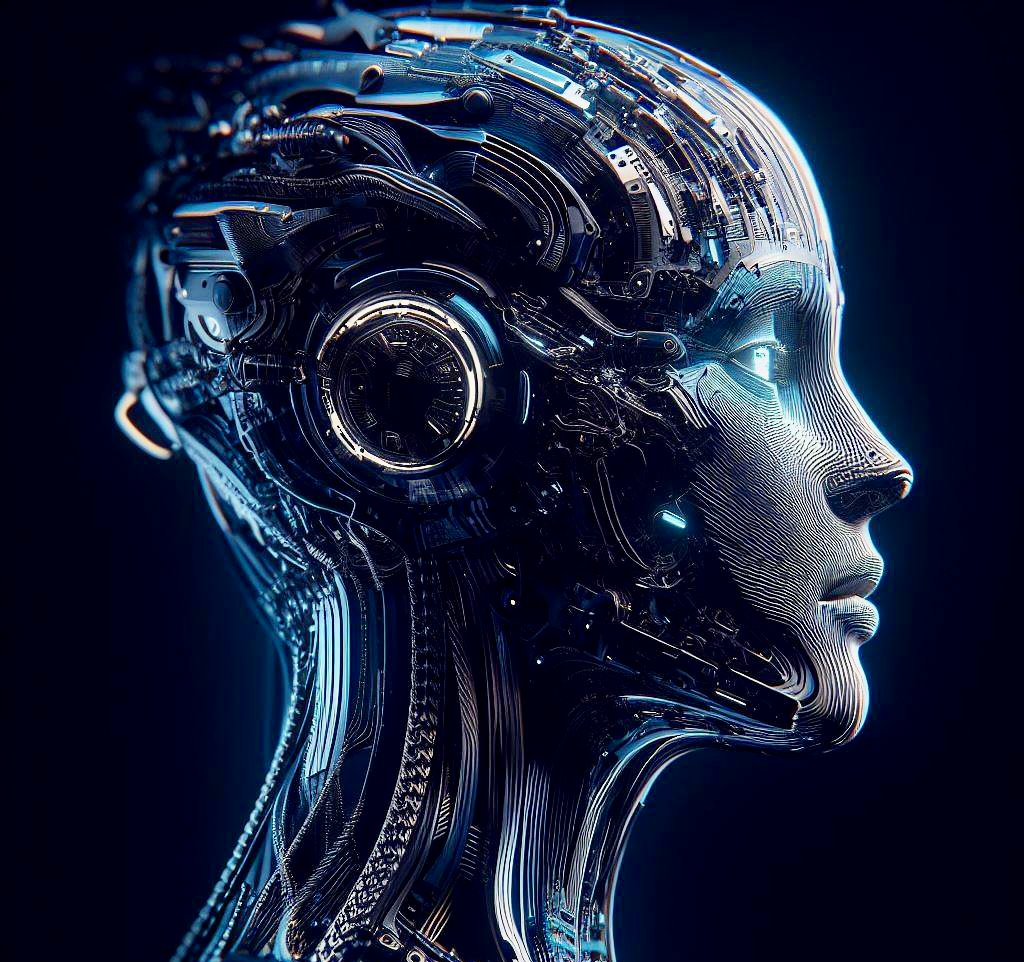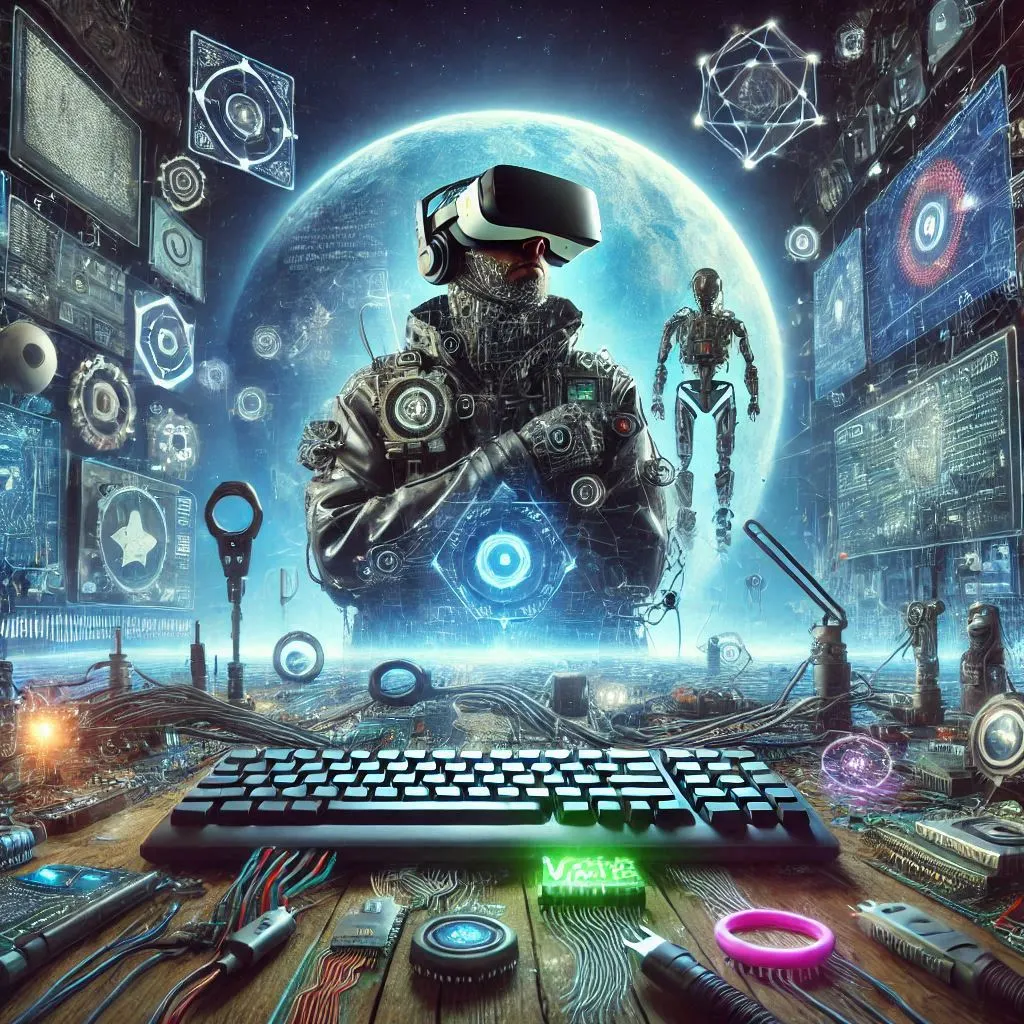
AI vs. ML: Are They the Same? Will AI Save Us or Control Us?
Ai (Artificial Intelligence) and Machine Learning are closely related terms, but they’re not the same thing. Here’s a simplified explanation of the main distinctions between them.
Scope:
- AI: A broad term encompassing any technique or method that aims to create intelligent machines capable of mimicking human cognitive functions like learning, reasoning, and problem-solving. It includes various approaches, like machine learning, expert systems, robotics, and natural language processing.
- Machine Learning (ML): A specific subfield of AI that focuses on using algorithms to learn and improve from data without being explicitly programmed. It allows machines to identify patterns, make predictions, and adapt to new situations without manual intervention.
Functionality:
- AI: Primarily concerned with achieving human-like intelligence and abilities. This could involve symbolic reasoning, understanding emotions, or generating creative text formats.
- ML: Focused on learning from data and making predictions or decisions based on that knowledge. It doesn’t necessarily try to replicate human thinking but excels at analyzing patterns and solving specific problems.
Complexity:
- AI: Can involve complex algorithms and techniques, but also simpler rule-based systems depending on the specific goal.
- ML: Often relies on complex mathematical models and statistical analysis, requiring large amounts of data for effective learning.
Examples:
- AI: A self-driving car that navigates traffic and avoids obstacles (might use a combination of techniques including ML, computer vision, and sensor data).
- ML: A recommendation system that suggests products you might like based on your past purchases (uses algorithms to analyze your purchase history and identify patterns).
Difference Between AI and ML:
AI is the field, and Machine Learning is one tool within that field.
Artificial Intelligience aims to create intelligent machines, while ML focuses on learning from data.
AI can be complex and encompass various techniques, while ML often relies on sophisticated algorithms and data analysis.
How does deep learning relate to machine learning?
Deep learning is a specific type of machine learning that uses artificial neural networks inspired by the structure and function of the human brain. Here’s how they relate:
Machine Learning (ML):
- Broader field: Encompasses various algorithms that enable machines to learn from data without explicit programming.
- Diverse techniques: Includes decision trees, linear regression, support vector machines, etc., each suited for different types of problems.
- Focuses on learning patterns and making predictions: Aims to extract knowledge from data and use it to solve specific problems.
Deep Learning (DL):
- Subset of ML: Utilizes artificial neural networks (ANNs) with multiple layers of interconnected nodes.
- Mimics brain structure: ANNs learn by adjusting connections between nodes based on data, similar to how neurons learn in the brain.
- Specialized for complex tasks: Excels at handling large amounts of data, recognizing complex patterns, and tasks like image recognition, natural language processing, and speech recognition.
Difference Between Deep Learning and Machine Learning
- Complexity: Deep learning models are typically more complex than other ML models, with many layers and parameters.
- Data requirements: DL often requires significantly more data for training compared to other ML techniques.
- Focus: Deep learning excels at tasks that involve complex relationships within data, while other ML methods might be better suited for simpler problems.
Think of it this way: Imagine you’re learning a new language. Traditional ML methods might be like learning vocabulary and grammar rules. Deep learning is like being immersed in the language and learning naturally through exposure and practice.
Deep learning has become a powerful tool within machine learning, particularly for tasks involving large datasets and complex patterns. However, it’s not always the best choice for every problem, and other ML techniques can be more efficient for simpler tasks.
What is Reinforcement Learning (RL) and How it Works?
Reinforcement Learning (RL) is a subfield of Machine Learning where an agent learns through trial and error in an interactive environment. Unlike supervised learning, where the agent is given labeled data (correct answers), RL agents receive feedback in the form of rewards for good actions and penalties for bad ones. The goal is to learn a policy that maximizes the long-term rewards.
Here’s how it works:
1. Environment: The agent interacts with an environment, which can be simulated or real-world. The environment provides observations (states) to the agent.
2. Actions: The agent takes actions based on its current state and learning.
3. Rewards/Penalties: The environment provides rewards or penalties based on the action taken. This feedback serves as guidance for the agent.
4. Learning: The agent uses this feedback to learn a policy, which maps states to actions. The goal is to choose actions that lead to the most rewards over time.
5. Exploration vs. Exploitation: As the agent learns, it needs to balance exploration (trying new actions to discover better options) and exploitation (using the best known action based on current knowledge).
Key RL Concepts:
- Policy: The agent’s decision-making rule: maps states to actions.
- Value Function: Estimates the future rewards an agent can expect from being in a particular state.
- Q-function: Estimates the value of taking a specific action in a given state.
- Reward Discounting: Future rewards are worth less than immediate ones.
Common RL Algorithms:
- Q-Learning: Learns the Q-function by trial and error.
- Policy Gradient Methods: Directly learn the policy by optimizing its parameters.
- Deep Reinforcement Learning: Combines RL with deep neural networks for complex tasks.
Applications of RL:
- Robotics: Learning robot control for tasks like walking or manipulation.
- Game playing: Training AI agents to master games like chess, Go, and StarCraft.
- Finance: Optimizing trading strategies.
- Recommendation systems: Suggesting products or content to users.
Advantages of RL:
- Can learn from diverse environments without explicit instructions.
- Adapts to changes in the environment.
Challenges of RL:
- Learning can be slow and require large amounts of data.
- Exploration vs. exploitation balance can be tricky.
- Difficult to interpret learned policies.
Reinforcement Learning is a powerful technique with broad applications. While it presents challenges, the potential for flexible and robust learning across various domains makes it a fascinating and continually evolving area of research.
From Healthcare to Entertainment: How AI, ML, and RL are Transforming Industries
Here are some real-world examples of AI, ML, and RL applications in different industries:
Artificial Intelligience (AI):
- Healthcare: AI-powered systems analyzing medical scans for early disease detection, robots performing minimally invasive surgeries, chatbots answering patient questions.
- Finance: Fraud detection in real-time transactions, personalized financial advice based on individual circumstances, algorithmic trading to optimize investment strategies.
- Agriculture: Precision farming techniques using drones and sensors to analyze crops and optimize resource use, AI-powered robots tending to livestock and automating tasks.
- Customer service: Chatbots resolving customer inquiries 24/7, sentiment analysis tools helping understand customer feedback, personalized product recommendations based on purchase history.
Machine Learning (ML)
- Transportation: Self-driving cars using ML algorithms to navigate roads and avoid obstacles, traffic prediction systems optimizing traffic flow, ride-sharing apps recommending the best route based on real-time data.
- E-commerce: Product recommendation engines suggesting items based on browsing history and past purchases, dynamic pricing adjusting based on demand and customer behavior, fraud detection systems identifying suspicious transactions.
- Manufacturing: Predictive maintenance systems analyzing sensor data to predict equipment failures and prevent downtime, quality control systems using ML to detect defects in products.
- Entertainment: Content recommendation platforms suggesting movies, shows, and music based on user preferences, AI-powered personalization in video games adapting difficulty and content to individual players.
Reinforcement Learning (RL)
- Robotics: Training robots to perform complex tasks in unstructured environments, like walking on uneven terrain or manipulating objects with varying shapes.
- Video games: Training AI agents to master complex games like StarCraft or Dota 2, developing strategies and adapting to different opponents.
- Supply chain management: Optimizing delivery routes and warehouse operations to minimize costs and maximize efficiency.
- Energy: Optimizing energy consumption in buildings and power grids based on real-time data and weather forecasts.
As the power of AI, ML, and RL grows, a critical question hangs in the balance: will these technologies widen the divide between us, or will they bind us closer? Will they become instruments of control, or tools for everyone’s benefit?
The answer isn’t written in code, but in our choices. By speaking up, demanding responsible development, and using these technologies for good, we can shape a future where AI, ML, and RL serve humanity, not the other way around. But the question remains: what role will you play in writing this future?







